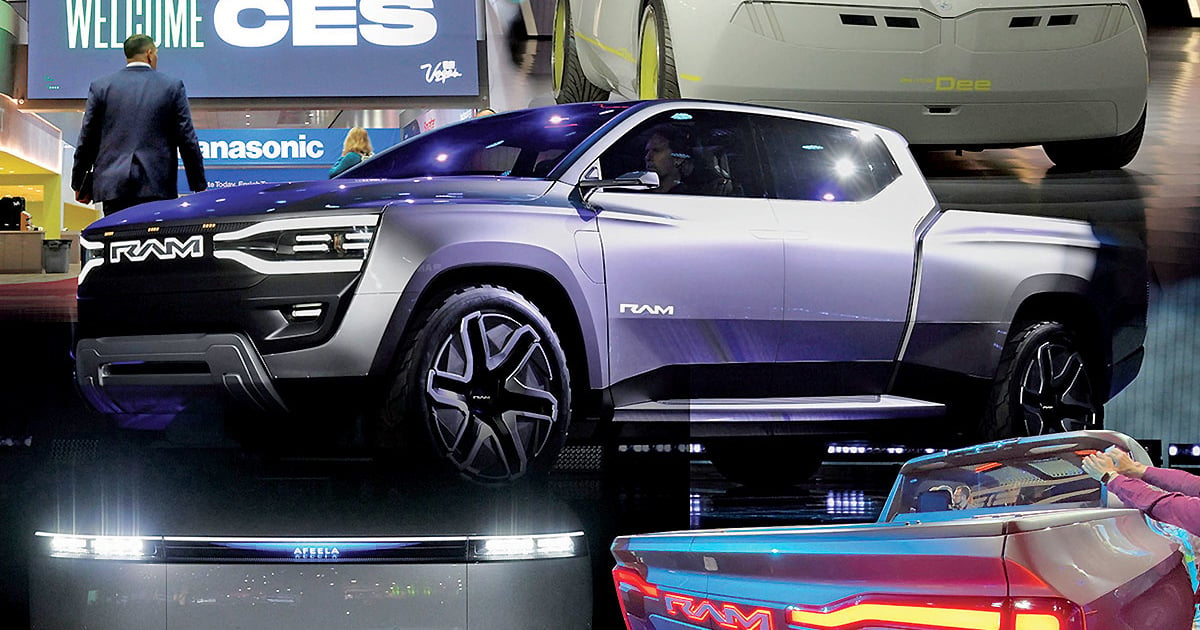
LAS VEGAS — Technology that could fundamentally reshape transportation was easy to find last week at CES.
There were sensors that allowed autonomous vehicles to travel at speeds approaching 190 mph, breakthrough battery advances that could enhance the transition to electric vehicles and immersive cabin technology that alters the passenger experience in cars.
How such technology moves from the show floor into the real world remains a vexing proposition. Innovation, particularly in the automotive sector, can be plodding.
It’s an age-old problem scrutinized with renewed vigor during CES. Pressing concerns over greenhouse gas emissions, energy security and geopolitical stability, and economic uncertainty have automakers seeking technology that can deliver both breakthroughs and cost reductions.
But those technologies must pass through laborious and thorough development, verification and validation processes. Sometimes patience is required; sometimes policy and funding can increase the velocity.
“You can make an argument that innovation is a function of time, and you eventually come up with a better solution,” said Philipp Kampshoff, who leads the McKinsey Center for Future Mobility in the Americas. “It’s also a function of the resources you put up against it.”
Automakers and others have committed those resources, investing more than $530 billion across autonomous, connected, electrified and shared mobility technology since 2010, according to McKinsey’s figures.
But just 6 percent of that investment came from automakers, McKinsey said. The remainder came from venture capital, private equity and technology players. For those accustomed to working outside the automotive business, the speed at which the industry moves remains a frustration.
“Other sectors say, ‘Let’s go, this is fantastic, we want to own this space,’ ” said Russell Pullan, CEO of eLeapPower, a Canadian startup that showcased an integrated inverter that allows EVs to charge directly from the grid without an onboard charger and increases range. “Automotive says, ‘This is great, but have you done it for 15 years?’ ”
Some automakers, particularly those from China, are more aggressive in adopting and deploying technology, Pullan and Kampshoff said. For example, eLeapPower found its first customer in Chinese vehicle maker Chery Automobile Co., which will integrate the startup’s inverters into as many as 50,000 commercial vans this year.
Broadly, China leads in deployment of connected-car technology, Kampshoff said. Both China and Europe have established leadership positions on ushering in EV technology, while the U.S. “is still solving the chicken-and-egg problem of consumers wanting more charging infrastructure,” he said.
During the past 18 months, the U.S. government has made efforts to build 500,000 public charging stations and jump-start development of a domestic supply chain for battery materials.
Such efforts may take a decade or longer to bear returns, said Tal Shoklapper, CEO of battery intelligent software provider Voltaiq. He warned that new battery chemistries, many of which have captured attention and enthusiasm, could have a slow commercialization pace because the status quo is entrenched and they will cost more.
“Nothing will dislodge lithium ion for decades,” he said.
Eli Leland, chief technology officer at Voltaiq, said that while the deck is not stacked against innovation in the battery space, expectations around time to market need to be recalibrated.
“The nature of innovation and progress in this field is that proving things out and scaling them up is challenging and usually takes a decade or so,” he said.
Federal legislation has provided a lift for a fledgling EV era. But it has not done the same for autonomous vehicles. The lack of legislative attention, some say, has stymied the widespread adoption of self-driving technology.
Congress has failed to pass multiple iterations of proposed laws that would create a national framework for AV regulations. Efforts to pass such legislation have faded under the current administration, said Gary Shapiro, president of the Consumer Technology Association, which owns and operates CES.
“We’re falling behind other countries,” he said. “The U.S. is not perceived as a friendly country for self-driving now.”
During the past decade, he said, the Obama, Trump and Biden administrations have provided support for general technology advancements and, more specifically, artificial intelligence. But now, “the Biden administration does not seem to have an appetite for self-driving.”
Beyond self-driving policy, robotaxis have their own share of problems.
They felt the brunt of industry headwinds in 2022, none more than Argo AI, which shuttered in October. Just over two months later, the closing of a company once considered a front-runner remains a stunning event in the AV realm. Questions about the viability of robotaxis cropped up at many automation-related events here.
Much like innovation may be a function of time, however, the impact of any short-term shocks might diminish with longer-term perspective.
Self-driving tech company Waymo’s CES display encapsulated this sentiment. The company lined up every vehicle model it has developed during the past decade in the parking lot of the Las Vegas Convention Center, from the formative Firefly to the Zeekr robotaxi unveiled in Los Angeles late last year. The vehicles also included the Chrysler Pacifica Hybrid minivan, Jaguar I-Pace and Class 8 truck.
YJ Ahn, Waymo’s head of design for the development of all five, looked out at the fleet last week. Sometimes, she said, the pace of progress can seem incremental. But taken as a whole, the innovation was undeniable.
“That’s the beauty of it,” she said. “You’re seeing there’s a lot of innovation going on. People just forget it. But when you look at it over the past 10 years like this, we came a long way.”